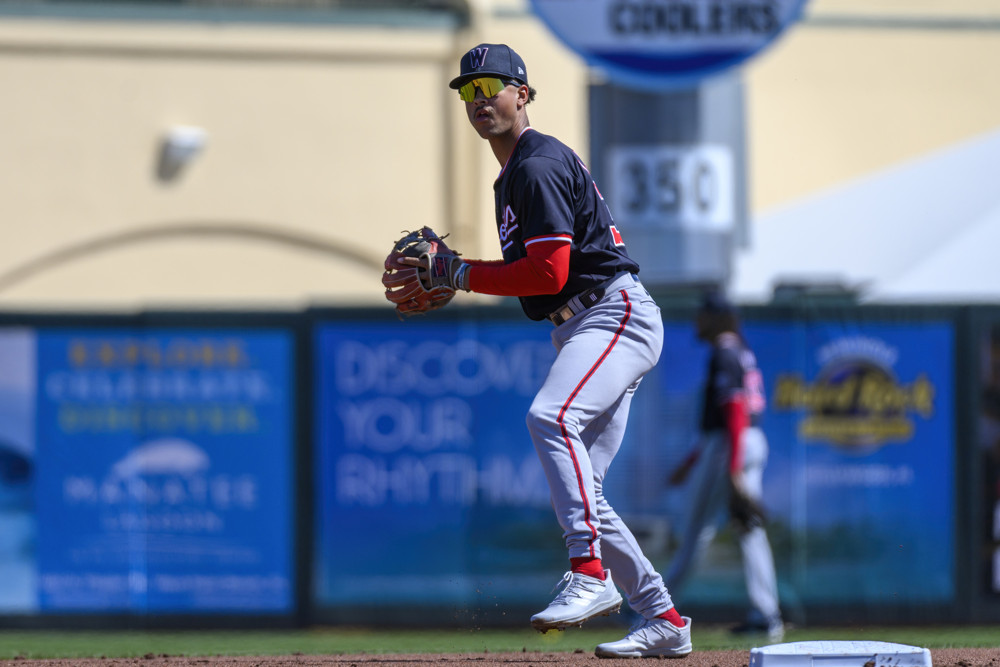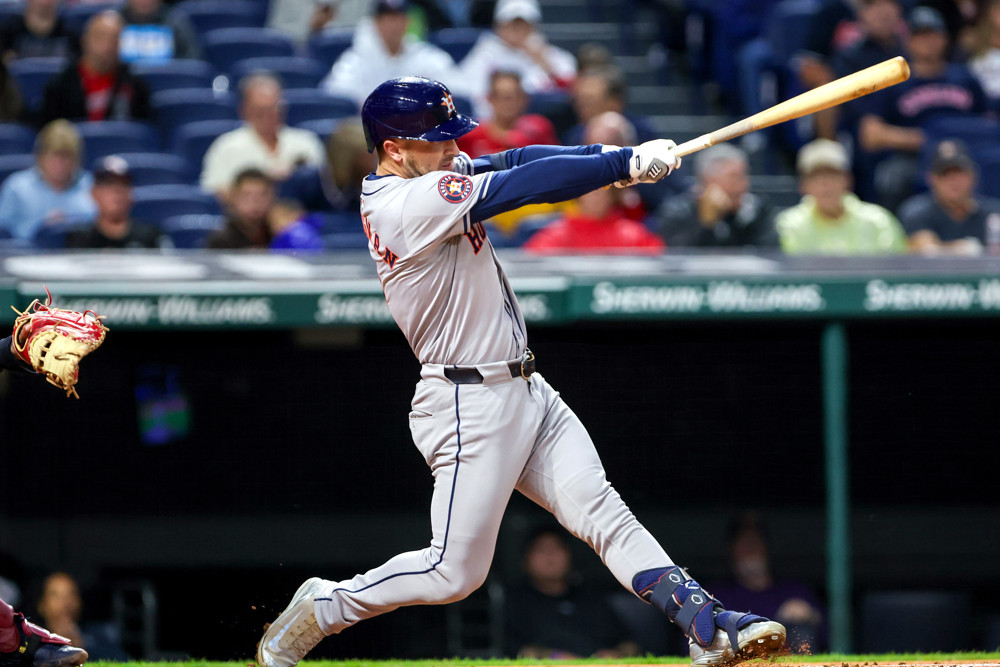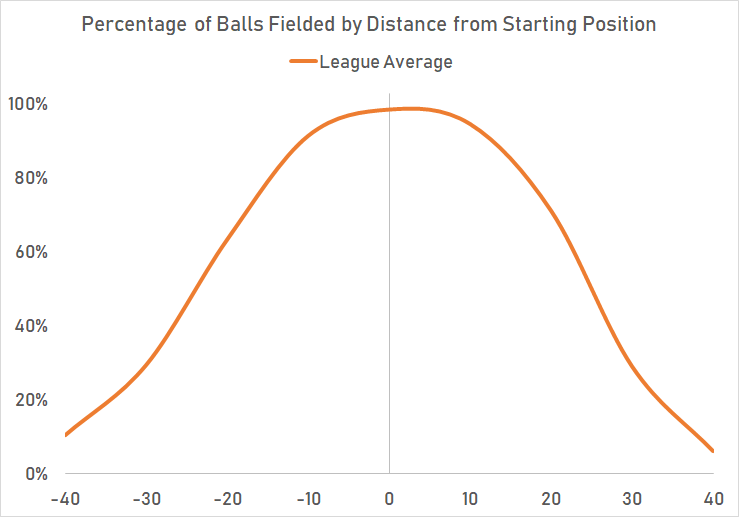By TED BAARDA
With Spring Training underway, baseball fans can look forward to enjoying more baseball in 2021 than we had in 2020. While MLB teams are ramping up, so are players in NPB and the KBO, Japan’s and South Korea’s top leagues respectively. NPB is starting up the earliest, on March 26, while the KBO is starting their season about a week later, on April 3.
Both leagues will also be taking a break from mid-June through early August to allow players to represent their countries in the Olympics, which should result in both Japan and South Korea fielding competitive teams in the event. In addition to fielding Olympians, both leagues feature players that have the upside to be future Major League contributors.
We looked at NPB pitchers a couple of weeks ago. Now here are some hitters from Japan’s NPB who could make their way to MLB at some point in the future. To get a balanced look at different types of players, I will fill out a roster with a player at each position, plus an extra at DH. Some of these players are established stars in Japan, some have high ceilings but are coming off down years, and some are in the process of proving themselves. We wanted to give you a variety.
Catcher: Tomoya Mori – Seibu Lions
Before the 2020 season Mori would have been one of the easiest choices for this list, as a young catcher coming off a .329/.413/.547 season in 2019. He is still young (he turns 26 in August), but he is coming off his worst season as a pro by far, slashing .251/.325/.380 in 2020. His worst previous season was 2016, when as a 20 year old he still managed an OPS that was 98 points higher than his 2020. For Mori to be successful, the bat needs to bounce back, since historically his glovework has been below average (and his small stature raises questions as well), as was discussed in my scouting report of him earlier this off-season.
If Mori can bounce back, many teams would be happy to add a lefty-swinging catcher with a career .291/.372/.469 slash line entering his prime years. Given his age and experience he should be eligible for international free agency after the 2023 season but could also find himself posted next off-season if a bounceback year creates a strong market for him.
First Base: Hotaka Yamakawa – Seibu Lions
Yamakawa has a lot of similarities to his teammate, Tomoya Mori, as a bounceback candidate from the Seibu Lions with questions about his size and defense. Yamakawa combined to hit 90 home runs in his first two seasons as a full-time player and has 153 career homers in just 530 games (46.8 per 162 games). However, his slugging percentage has dropped off since his big 2018, going from .590, to .540 in 2019, to .450 in 2020. His strikeout rate has also bumped up from 21% to 25% last year, though he has maintained high walk rates during that time as well.
His athleticism is probably the first place to look to explain his struggles, as he is listed at 5’9 and 227 lbs and is a poor runner. While Japanese teams are not known for embracing defensive shifts, they do get creative with Yamakawa by having their middle infielders back up and play anywhere from 5 to 20 feet deep into the outfield grass since he hits the ball so hard.
Anything they can reach on the ground is likely an out. Yamakawa’s size also limits him on defense, as 5’9 is very short for a first baseman (taller players are preferred since they can more easily reach errant throws from infielders). His range is poor, even for a first baseman, which leads to poor metrics at the position. While he has played some third base, it has been sparingly and not particularly pretty by the eye test. He is more of a DH than anything else.
Yamakawa had a later start to his career than many NPB stars, and that means that despite being 29 years old, he is still years away from free agency. For him to be a big leaguer, he will need to have a resurgence at the plate, and find some success in the posting market in the next couple of years.
Second Base: Tetsuto Yamada – Yakult Swallows
Yamada is arguably the biggest name on this list and is a superstar in Japan, commonly referred to as Japan’s Mike Trout. I wrote a scouting report on Yamada a few months ago, but the 2020 season was a disappointment for him.
Reports have indicated that Yamada arrived to resumed camps out of shape and then he dealt with injuries in the middle of the season. That being said, a second baseman putting up a .254/.346/.419 line is respectable at the NPB level.
Yamada’s batting line in 2020 was so disappointing because he has established that he can perform at an elite level. In the six seasons from 2014-2019 Yamada put up a .299/.406/.555 line with 198 HR and 159 SB (with just 22 CS), producing four 30-30 seasons in that span. Yamada is another player who needs to rebound in 2021, but the rewards for him could be much greater. He should be eligible for international free agency next off-season, and given his established level of performance and age (he turns 29 in July) he could land himself a very nice MLB contract should he rebound to his previous form.
Shortstop: Hayato Sakamoto – Yomiuiri Giants
Sakamoto is on the older side for a list of potential future Big Leaguers, having just turned 32. However, he is one of the most accomplished players in NPB history, having surpassed 2,000 career hits at this point in his career, a total he cleared late last season. While 2,000 hits is an impressive total, it is even more impressive when you consider that NPB regular seasons are 19 games shorter than MLB seasons, and as a middle infielder Sakamoto would be required to spend countless hours doing defensive drills in practice in addition to finding time to work on his hitting.
Sakamoto is only the 53rd player in league history to reach 2,000 hits. He does more than just collect singles, as he has good gap power and will usually finish the year with home run totals in the teens and around 30 doubles. In 2019 he won the Central League MVP with career highs of 40 HR, 94 RBI, and a .575 SLG.
In addition to his talent with the bat, Sakamoto is a good fielder too. While he has a large frame for a NPB shortstop (6’1, 190 lbs), Sakamoto has good range, particularly up the middle, and a strong throwing arm. While he has never won a Gold Glove at the position, Sakamoto did win the first NPB Fielding Bible Award at shortstop for his glovework in 2020, when he also led all NPB shortstops with 6 Defensive Runs Saved (Note that DRS in this case is compared to MLB average). This was the best year that he has had defensively by DRS (since we started tracking NPB data in 2018). He grades out as close to MLB average at the position when looking at his 3 year average.
Sakamoto’s is an interesting case, as he looks to have all the tools to be a MLB-caliber player and has an impressive resume to back it up. However, at only 32 he has a good shot at breaking the all time hits mark in NPB, which is currently 3,085 by Isao Harimoto. A detour to play a few years in North America would severely hinder his chances of breaking the record and the infamy that would come with it. He may have less motivation than most to come stateside, but he will likely go down as one of the best players Japan has ever seen.
Third Base: Kazuma Okamoto – Yomiuri Giants
Kazuma Okamoto has spent the past few years building an impressive offensive resume. He made his NPB debut back in 2015, but was used sparingly in his first three years before becoming a full-time player in 2018. His 2018 season is still the best that he has put up with the bat, hitting .309/.394/.541, but he has been a consistent source of offense for the Giants.
At only 24 years old (he turns 25 in June) Okamoto could grow into more power. Despite playing 25 fewer games in 2020 than he did in each of the previous two seasons, he managed to match his 2019 home run total of 31, and posted a career best .270 ISO with a career-low 17% strikeout rate (best among his full seasons).
Defensively Okamoto has settled in as the full-time third baseman for Yomiuri and he has been about MLB average at the position, with a net DRS of 0 over the last three seasons (reminder: MLB average equates to a good defensive player in Japan). He uses his strong arm to make up for below average range. He has also played some first base (where the metrics showed he rated poorly) and left field, where in a small sample he again graded out around MLB average and recorded a couple of outfield kills (assists without a cutoff man), in limited innings, to again demonstrate his strong arm.
Yomiuri has started to post some players when requested, but overall is not going to aggressively post their young stars. Okamoto will likely need to wait until his late 20s to either be posted or achieve international free agency to be available to MLB teams.
Designated Hitter (Third Base): Yusuke Ohyama – Hanshin Tigers
Calling Ohyama a DH is a bit misleading, since he has been Hanshin’s regular third baseman for the past few years, but for the sake of this exercise he is our ‘DH’. Ohyama has experience at all four corner positions (plus 2 innings in center field last year), grading out as a little below MLB average at both corner infield spots and without enough of a sample size to say how good his outfield defense is. While Ohyama can be played in any corner spot, his bat is what will determine his success.
Ohyama made his NPB debut in 2017 and appeared in 75 games before becoming a full-time starter in 2018. From 2017-2019 he hit .259/.315/.418, which is an uninspiring batting line for a corner player. However in 2020 he exploded for a .288/.357/.560 line, which is made even more impressive given that his home park, Hanshin Koshien Stadium, is known as a pitcher’s park.
Ohyama doubled his previous season-high in home runs by belting 28 in the abbreviated 2020 season, which placed him in a tie for second in the Central League. Now 26 years old, Ohyama will need to show that he can maintain his newfound power stroke over the next few years if he wants an opportunity to play in North America.
Outfield: Seiya Suzuki – Hiroshima Carp
Seiya Suzuki is simultaneously the most established and youngest of the outfielders highlighted here, as despite debuting for Hiroshima in 2013 he won’t turn 27 until this August. He is the prototypical right fielder, with a strong arm and a powerful bat, though he is more than just a slugger at the plate. Incredibly, Suzuki’s 2020 slash line of .300/.409/.544 features his lowest AVG and SLG since he became a full-time starter beginning in 2016. His strikeout and walk rates, both right around 14% in 2020, were both a little worse than his 2019 numbers, where his walk rate was a bit higher than his strikeout rate.
Defensively Suzuki’s best tool is his cannon of an arm. He is also fairly athletic but doesn’t always read balls well, yet his arm and athleticism have helped him earn three Gold Glove Awards for his work in right field. Similarly on the bases, Suzuki has the speed to steal bases, but doesn’t have great base-stealing instincts and gets thrown out at a high rate.
Compared to fellow former Central League outfielder Yoshi Tsutsugo, Suzuki produces better rate stats at the plate and has a better defensive reputation (And it should be noted that Tsutsugo’s home park was considered fairly hitter-friendly). Suzuki will likely still need to wait for a few years to test himself at the MLB level, as he still looks to be three years from international free agency, unless he gets posted before then.
Outfield: Masataka Yoshida – Orix Buffaloes
Coming into 2020 Yoshida was already considered one of the better pure hitters in Japan, coming off a .322/.413/.543 2019 with a career high 29 HR. While many players now make changes to sell out for more power, Yoshida went in the opposite direction in selling out for contact and avoiding striking out in 2020. Last season he put up 72 walks against just 29 strikeouts, for a 6% strikeout rate with a healthy 15% walk rate. His power took a step back, as his .162 ISO was a career low, but he posted career bests in AVG and OBP with a .350/.453/.512 line and still hit 14 home runs in the slightly abbreviated season.
While Yoshida is not old, he turns 28 in July, he is primarily a left fielder without any loud defensive tools, though Defensive Runs Saved pegged him around average as a left fielder last season with some DH time as well. Orix has struggled to win as a team for a while now, so Yoshida could be a posting candidate in a couple of years if the team can’t build a winner with him. If they hang onto him, he will be a few years into his 30s by the time he can become an international free agent.
Outfield: Mel Rojas Jr. – Hanshin Tigers
Mel Rojas Jr. proved everything that he could in the KBO last season, winning KBO MVP, and nearly captured a Triple Crown in the process. He did all of that while enjoying a comfortable lead in hard-hit rate.
Moving to NPB, Rojas will look to put up big numbers again, which will be more of a challenge given the better pitching he will face, and the fact that he is moving to a pitcher’s park. Hanshin has had success in transitioning players from the KBO to NPB, evidenced by its signings of reliever Seung-hwan Oh in 2014 and outfielder Jerry Sands last year, and is hoping for more success with Rojas and pitcher Raul Alcantara this year.
Rojas will likely play right field for the Tigers, replacing veteran Yoshio Itoi in the starting lineup while Sands plays left field on most days. While the 30 year old Rojas was rumored to be considering MLB offers this off-season, they likely were not substantial offers, and he is betting on himself going to NPB and putting up big numbers to earn a more lucrative MLB contract in the next year or two.



